Rhydymain is a small village situated on the A494 road from Dolgellau to Llanuwchllyn, some five miles north-east of Dolgellau. The men of the village who fell during the Great War are commemorated on a simple brass memorial plaque, which is situated within Rhydymain Independent Chapel. There is an identically named memorial at Capel Siloh, Rhydymain, while all of the men are also commemorated on the Dolgellau memorial.
The Great War, 1914-1918
Edward Evans, Private, 291469, Royal Welsh Fusiliers. Edward was the son of John and Jane Evans of Blaenyddol, Rhydymain. He worked as a farm labourer and postman prior to the war. Edward enlisted into the 7th Battalion, Royal Welsh Fusiliers at Dolgellau on 10 December 1915. He was initially placed on the Army Reserve, and then mobilised on 17 February 1916, joining the 2/7th Battalion, Royal Welsh Fusiliers at Park Hall, Oswestry. On 13 March 1917 Edward arrived in France, joining No 5 Infantry Base Depot, and was posted to the 2nd Battalion, Royal Welsh Fusiliers, which was attached to 19 Brigade, 33rd Division, joining the battalion at Adinfer on 3 May, together with 80 other men. The battalion then marched to Moyenville on 12 May and on 15 May moved into the support line on the St. Leger to Henin road. On 18 May 1917 the 2nd RWF relieved the Cameroonian’s in the Croisilles Sector, facing the Hindenburg Line. Two days later the Division made an assault on the Hindenburg Line, successfully taking the front line, but failed to break through and take the support trench. The 2nd RWF was then placed back in reserve, before taking over the front line again on 21 May, remaining there until launching another assault on the Hindenburg Line on 27 May 1917. The attacking troops came under heavy machine-gun fire as they attempted to break the German defences, and during the days fighting the 2nd RWF alone suffered over 120 casualties. Edward had been killed in action during the days fighting. The 25-year-old has no known grave and is commemorated on the Arras Memorial, France.
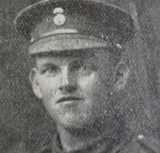
Hugh Edward Evans, Private, 81734, Royal Army Medical Corps. Hugh was the son of Griffith and Mary Anne Evans of Glan Eiddon, Rhydymain, Dolgellau. He was a student at the University of Wales, Bangor when he was conscripted into the army on 27 January 1916, and as a pacifist was posted to the Royal Army Medical Corps. He was posted to Sheffield for training, and on 10 September 1916 embarked at Southampton for Salonika, to serve in the 36th General Hospital. Hugh served just over a year in a theatre of war that saw the Allies suffer as many men sick as actual casualties of war. He contracted malaria, and died of sudden heart failure following malaria at the 36th General Hospital, Salonika on 28 October 1917, aged 23. Hugh is buried in Mikra British Cemetery, Kalamaria, Salonika.
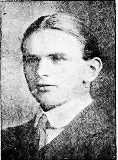
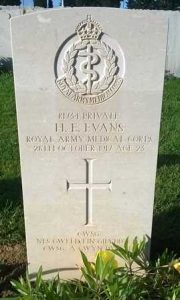
Thomas Evans, Private, 89615, Royal Welsh Fusiliers. Thomas was the son of Edward and Elizabeth Evans of 3, Micrion Terrace, Brithdir, Dolgellau. He worked at Coedrhoslwyd prior to enlisting at Wrexham into the Royal Welsh Fusiliers, and was posted to France in the summer of 1918, joining the 13th Battalion, Royal Welsh Fusiliers, which was attached to 113 Brigade, 38th (Welsh) Division. He probably joined the battalion after the Division had launched its offensive across the flooded Ancre Valley on 21 August 1918, and began its slow advance towards the mighty Hindenburg Line. The Division had crossed the old Somme battlefields of 1916, taking Mametz Wood and Delville Wood, then advanced, seizing Morval and Sailly-Saillisel, before launching an attack across the Canal du Nord. Thomas was probably wounded when the 13th RWF took part in the Divisions assault on Mortho Wood, a heavily defended area, on 8 October. He was evacuated through the chain of dressing station to Casualty Clearing Stations, back to the 26th General Hospital, at Étaples, where he was being prepared to transfer back to Britain, but sadly died of his wounds there on 29 October 1918, aged 20. Thomas is buried in Étaples Military Cemetery, France. His brother, Richard, was killed in 1917.
Robert William Griffiths, Private, 60263, Welsh Regiment. Robert was the son of David and Elizabeth Griffiths, of 2, Penybont, Rhydymain, Dolgellau. He worked as a Farm Labourer prior to enlisting at Wrexham into the 3rd Battalion, Welsh Regiment on 11 June 1917. Upon completing his training at Redcar, Robert embarked at Southampton for France on 6 November 1917, and was posted to the 5th Infantry Base Depot at Rouen. Robert was initially pencilled in to join the 17th Battalion, Welsh Regiment, but on 5 December 1917 joined the 9th Battalion, Welsh Regiment, which was attached to 58 Brigade, 19th (Western) Division, and joined the battalion just prior to the Divisions move to the Havrincourt Sector. The Division took over a section of the Flesquières Salient, and enjoyed a relatively few weeks in its new positions. Robert was killed in action here on 20 December 1917, aged 20. He has no known grave and is commemorated on the Thiepval Memorial, France.
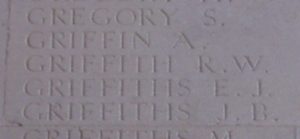
William Hughes, Private, 5940, Royal Welsh Fusiliers. William was born in Rhydymain in 1874, the son of Hugh and Catherine Hughes. He married Mary Alice Roberts on 7 May 1904, and the couple lived at 17, English Terrace, Dolgellau. He was an Army Reservist, and had been working as a coal miner prior to re-enlisting at Warrington into the 3rd Battalion, Royal Welsh Fusiliers on 30 August 1914 and travelled to the Depot at Wrexham. On 11 November 1914 William landed in France, after being drafted to the 1st Battalion, Royal Welsh Fusiliers, which was in the Ypres Salient, attached to 22 Brigade, 7th Division. The Division had landed at Zeebrugge on 6 October 1914, but the City was falling to the Germans, so the Division moved to Ypres, becoming the first British Division to hold the city. The Division took part in heavy fighting during the First Battle of Ypres, and helped stop the German advance through Belgium towards the Channel coast. William joined the battalion at Merris, where it was rebuilding following its efforts at Ypres. On 14 November the battalion received orders to take over trenches at Touquet, just south of Bois-Grenier, and that day began a long spell in the new line. William was killed in action here on 9 December 1914, aged 40. He has no known grave and is commemorated on the Ploegsteert Memorial, Belgium.
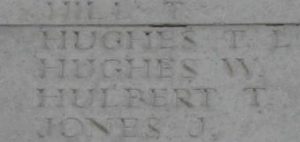
John Richard James, Private, 35441, Royal Welsh Fusiliers. John was the son of Richard and Anne James, of Rhydymain, Dolgellau. He lived at Waltham Abbey prior to the war, and worked as a machine turner. John enlisted at Holborn, London into the Royal Welsh Fusiliers on 8 December 1915, and was posted to the 18th Battalion, Royal Welsh Fusiliers, which was the 2nd London Welsh Battalion, at Kinmel Park. On 25 July 1916 John embarked for France, initially bound for the 19th Battalion, Royal Welsh Fusiliers, but was instead posted to the 10th Battalion, Royal Welsh Fusiliers, which was on the Somme attached to 76 Brigade, 3rd Division. John joined the battalion in camp at Mericourt, after its epic fight at Delville Wood, where two men of the battalion had been awarded Victoria Crosses. On 15 August the 10th RWF moved back into the front line near Talus Bois, taking over positions at Casement, Dublin and Chimpanzee Trenches and on the following day took part in an attack against the German positions at Lonely Trench. During the heavy fighting over the coming days the battalion suffered almost 350 casualties, and was withdrawn, moving back into reserve near Morlancourt before moving to Candas. The Division then moved to the area around Noeux-Les-Mines for a short while, before returning to the Somme, to take part in the Battle of the Ancre. In the meantime, John had spent a month in hospital after injuring his knee, but re-joined the battalion on 12 November, in the trenches at Serre. On the following day the battalion took part in another assault, attacking the German lines at Serre, but again suffered heavily, with almost 300 casualties during the day. The line then quietened down, and a relatively peaceful spell of routine trench warfare followed. John was one of three men of the 10th RWF killed in action in the Serre trenches on 28 November 1916. The 23-year-old is buried in Euston Road Cemetery, Colincamps, France. His brother William, in the same battalion, had been killed on the Somme on 16 August.
William Evan James, Lance Corporal, 35371, Royal Welsh Fusiliers. William was the son of Richard and Anne James, of Rhydymain, Dolgellau. He worked as a milkman in London prior to the war and lived at 11, Downham Road, Kingsland. William enlisted at Holborn, London into the Royal Welsh Fusiliers on 17 January 1916, and was posted to the 18th Battalion, Royal Welsh Fusiliers, which was the 2nd London Welsh Battalion, at Kinmel Park. On 23 July 1916 William embarked for France, initially bound for the 19th Battalion, Royal Welsh Fusiliers, but was instead posted to the 10th Battalion, Royal Welsh Fusiliers, which was on the Somme attached to 76 Brigade, 3rd Division. William joined the battalion in camp at Mericourt, after its epic fight at Delville Wood, where two men of the battalion had been awarded Victoria Crosses. On 15 August the 10th RWF moved back into the front line near Talus Bois, taking over positions at Casement, Dublin and Chimpanzee Trenches and on the following day took part in an attack against the German positions at Lonely Trench. William was killed in action during the terrible fighting at Lonely Trench on 16 August 1916. The 21-year-old is buried in Guillemont Road Cemetery, Guillemont, France. His brother John, in the same battalion, was killed at Serre on 18 November.
Lewis Jones, Private, 1712, Welsh Guards. Lewis was the son of John and Jane Jones of Esgeiriau, Rhydymain. He worked as a farm labourer prior to enlisting at Northampton into the 1st Battalion, Welsh Guards. The Regiment was raised by Royal Warrant of 26 February 1915, at White City, before landing at Le Havre on 18 August 1915, becoming attached to 3rd Guards Brigade, Guards Division. The Division saw its first major action during the Battle of Loos, which began on 25 September 1915, remaining in the area during the coming months, where they also fought in the subsequent Action of Hohenzollern Redoubt. Lewis joined the battalion after the Loos offensive, prior to the Guards move south to the Somme. The Guards Division then took part in the Battle of Flers-Courcelette, which was the first time that tanks were used in action. The Division then took part in the Battle of Morval, capturing the German held village of Lesboeufs. Lewis was badly wounded during the Somme offensive, and reportedly lay in No Man’s Land for a long time before being rescued by a stretcher bearer crew. He spent many months in hospitals, having an arm amputated, before returning home, where he eventually died of his wounds on 29 May 1917, aged 21. Lewis is buried in Rhydymain Independent Chapelyard.
Eiddon Thomas Marchant, Lance Corporal, 36904, Machine Gun Corps. Eiddon was the son of Thomas Nelson Marchant and Elizabeth Marchant, of Railway Cottage, Rhydymain, Dolgellau. He worked as a Bricklayer’s Labourer for the Great Western Railway at Bontnewydd prior to the war. Eiddon enlisted at Dolgellau into the 7th Battalion, Royal Welsh Fusiliers, and was posted to Park Hall Camp, Oswestry. After completing his training Eiddon was posted to the 233rd Company, Machine Gun Corps, which was training at Belton Park. On 12 July 1917 the Company embarked at Southampton for France aboard the SS Hunslet, and disembarked at Le Havre later that day. The Company then entrained for Bapaume, joining the 3rd Division. The Company moved into the Beaumetz to Morchies line on 22 July, and the men had their first taste of trench life over the coming days. During the first week of September the 3rd Division was relieved, and moved to the Ypres Salient, in order to take part in the Passchendaele offensive, taking up positions on the Frezenberg Ridge on 21 September. The 233rd MG Company then supported the Divisions assault around the area of Polygon Wood, and had a torrid time over the coming days, being constantly shelled by the Germans. Eiddon had by now become attached to the 220th MG Company, which was attached to the 7th Division, also fighting around Polygon Wood. He was killed in action near the Butte, in Polygon Wood, whilst supporting an attack to the east of the wood on 4 October 1917. The 21-year-old has no known grave and is commemorated on the Tyne Cot Memorial, Belgium.
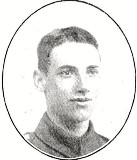
Joseph Martin, Private, 16769, Royal Welsh Fusiliers. Joseph was born in Breage, Cornwall in 1892, the son of Samuel and Mary Martin. By 1911 the family was living at Bryncoedifor, Dolgellau, and Samuel had become Headmaster of Dolgellau Council School. Joseph worked on a local farm prior to the war. He enlisted at Wrexham into the 13th Battalion, Royal Welsh Fusiliers in September 1914. The battalion was raised at Rhyl on 3 September 1914 by the Denbigh & Flint TF Associations and transferred to the Welsh National Executive Committee on 10 October and moved to Llandudno the following month, joining 128 Brigade, 43rd (Welsh) Division. On 28 April 1915 the formation became renumbered as 113 Brigade, 38th (Welsh) Division, and moved to Winchester in August for final training. From 1 December 1915 the Division began embarking for France, and moved to the Nursery Sector near Fleurbaix for trench initiation alongside the Guards Division. The Division then held a sector of the line near Cuinchy before marching south to the Somme sector in June 1916 to take part in the assault on Mametz Wood. The first attack on the wood was launched on a two-battalion front on 7 July, but failed, and the Divisional Commander, Sir Ivor Philipps, was replaced before the Division attacked again on a two Brigade front on 10 July 1916. After two days of severe fighting, the wood was cleared up to its northern boundary, and the battered Division was relieved, moving to Hébuterne before taking over the Canal Bank Sector at Boesinghe, north of Ypres. On 2 September 1916 the 13th RWF moved into the new line for its first tour in the trenches at the Canal Bank. Over the coming weeks the men of the Division worked hard, improving the trenches while guarding the front, and carried out a number of trench raids. On 29 October 1916 the 13th RWF was back in the front line again, and on their flank the 16th RWF carried out another trench raid. In retaliation, the Germans bombarded the front line with Trench mortar rounds, and Joseph was killed in the barrage. He was 24-years-old when he was killed that day, and is buried in Essex Farm Cemetery, Ypres, Belgium.
William Williams, Private, 60926, Royal Welsh Fusiliers. William was born at Llanuwchllyn in 1897, the son of John and Jane Williams. His mother was from Rhydymain. By 1911 the family was residing at Station House, Rhos, Ruabon. William enlisted at Dolgellau into the Royal Welsh Fusiliers in 1917, and after completing his training was posted to France, joining the 2nd Battalion, Royal Welsh Fusiliers, which in February 1918 had joined 115 Brigade, 38th (Welsh) Division. The Division was in the Armentieres sector, but at the end of March was rushed south to the Somme, to relieve the battered 2nd and 47th Divisions in the line north of Albert, facing Bouzincourt Ridge. The Division then took part in several small-scale assaults against the Germans to gain control of the ridge and thus afford a view across the Ancre valley towards Thiepval Ridge. On 21 August 1918 the Division crossed the flooded River Ancre and captured Thiepval Ridge and Pozieres, before launching their advance across the old Somme battlefields towards the Hindenburg Line. The Division saw heavy fighting whilst advancing through Longueval and Delville Wood, then at Morval and Sailly-Saillisel over the coming days and by 11 September had reached the outskirts of Gouzeaucourt. By 18 September the 2nd RWF had taken up positions on Fins Ridge and took part in the fighting to clear Dessart Wood. William was wounded here, and evacuated to the 3rd Casualty Clearing Station where he died of his wounds on 21 September 1918, aged 21. He is buried in Thilloy Road Cemetery, Beaulencourt, France.